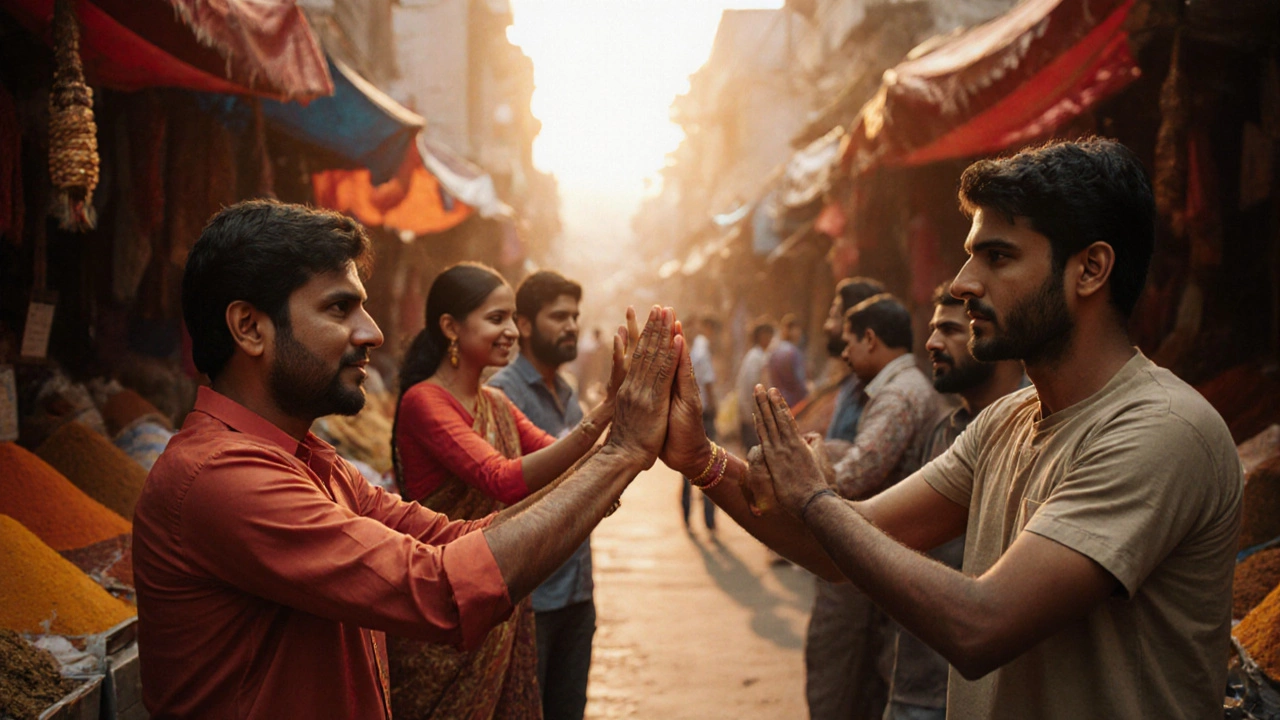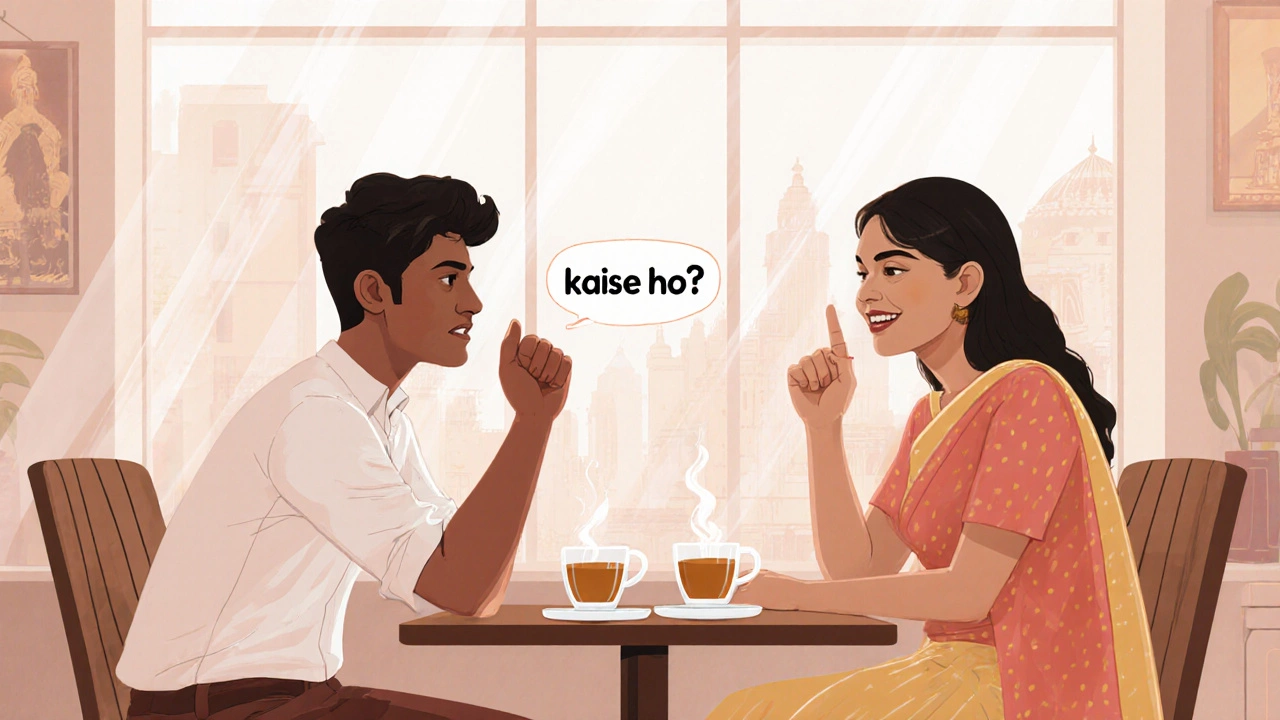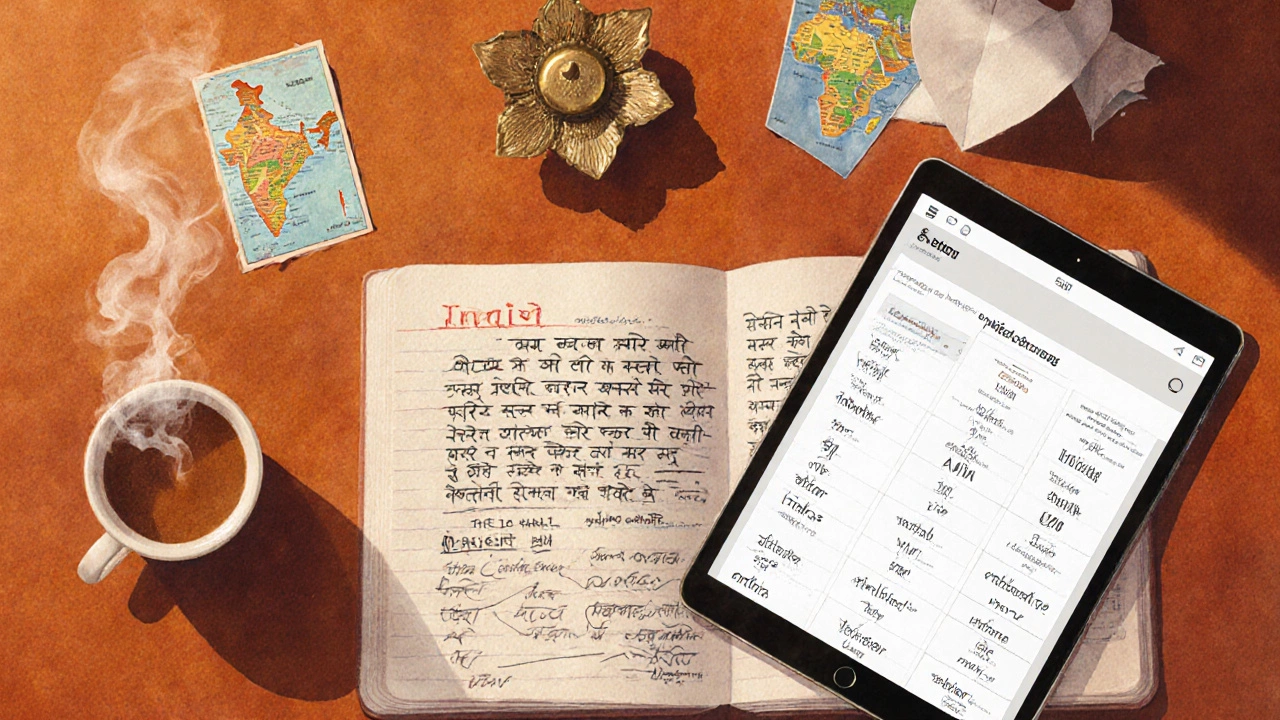Common Indian Phrases and Their Everyday Meanings

Indian Phrases Explorer
Key Takeaways
- Learn the most frequently used Indian phrases for greetings, thanks, apologies and casual chat.
- Each phrase includes the original script, phonetic guide and the best English equivalent.
- Discover cultural tips that make the phrases sound natural in real conversations.
- A handy table lets you scan phrase, literal meaning and typical usage at a glance.
- FAQs cover pronunciation, regional variants and how to blend these expressions into daily talk.
When you hear common Indian phrases a set of everyday expressions spoken across India, primarily in Hindi and its many dialects, they often sound friendly, lively, and surprisingly easy to pick up. Whether you’re planning a trip, chatting with a South‑Asian friend, or just curious about the cultural vibe, knowing a few staple sayings can instantly bridge the gap. Below you’ll find the phrases you’ll hear most often, why they matter, and how to use them without sounding forced.
Greetings that Open the Door
India values respect and warmth right from the hello. Here are the go‑to greetings you’ll hear in markets, offices and homes.
- Namaste a Hindi word meaning ‘I bow to the divine in you’ - the classic, universal greeting. Use it with a slight bow and hands pressed together.
- Namaskar a formal variant of Namaste, often used in business settings - similar gesture, a tad more reverent.
- Salaam borrowed from Urdu, means ‘peace’; popular in northern India - suitable when you want a slightly different flavor.
- Hi / Hey English greetings widely accepted among younger Indians - casual, especially in urban areas.
Tip: Pair a greeting with a question like “Kaise ho?” (How are you?) to keep the conversation flowing.
How to Ask ‘How are you?’
Checking in shows you care. Most people respond with a short, polite answer unless you’re close friends.
- Kaise ho? informal ‘How are you?’ used with friends or peers
- Aap kaise hain? formal version for elders, strangers or superiors
- Typical reply: “Main thik hoon” (I’m fine) or “Thik chaal raha hai” (All’s good).
When you hear a confident “Sab badhiya!” (Everything’s great!), you know the person is in a good mood.
Showing Thanks
Politeness is a cornerstone of Indian etiquette. Knowing the right thank‑you word can earn you instant goodwill.
- Shukriya Urdu‑origin thank you, common in North India
- Dhanyavaad pure Hindi thank you; a bit more formal
- For quick thanks among friends, you’ll also hear “Thanks” or “Thanks yaar” (thanks buddy).
Adding a smile and a slight nod after saying thank you makes the gesture feel genuine.

Apologizing the Indian Way
Everyone makes mistakes. A simple apology can smooth over most hiccups.
- Maaf kijiye ‘Excuse me/I'm sorry’; polite and widely used
- For a more heartfelt apology, say “Mujhe maaf kar do” (Please forgive me).
- In bustling markets, people often say “Thoda dhyaan se” (Be careful) before pointing out a mistake.
Pair the apology with a respectful tone and you’ll be forgiven quickly.
Everyday Conversation Fillers
These little words keep chats natural, just like “uh‑uh” or “you know” in English.
- Bhai literally ‘brother’, used like ‘mate’ or ‘dude’ among males
- Dost means ‘friend’; works for any gender
- Jaldi ‘quickly’, handy when you’re in a hurry
- “Thik hai” (Okay/Alright) signals agreement or acceptance.
- “Acha” (Okay, or ‘really?’) is a versatile filler that can show interest or mild surprise.
Sprinkle these fillers sparingly; overusing them can sound forced.
Food‑Related Phrases You’ll Hear at the Table
Food is a huge part of Indian culture, and the language around it is colorful.
- “Masaledar” - spicy, full of flavor.
- “Thanda” - cold (used for drinks).
- “Mithai” - sweets or desserts.
- “Baarish ka paani” - literally ‘rain water’, but often said humorously when a dish is too watery.
When a host says “Aapko pasand aaya?” (Did you like it?), a simple “Bahut achha” (Very good) is the perfect response.
Quick Reference Table
| Phrase (Hindi/Urdu) | Phonetic | Literal Meaning | Typical Use |
|---|---|---|---|
| Namaste | nuh-MAH-stay | I bow to you | General greeting |
| Kaise ho? | KAI-say ho | How are you? | Informal check‑in |
| Aap kaise hain? | Aap KAI-say hain | How are you? (formal) | Respectful conversation |
| Shukriya | shoo-KREE-ya | Thank you | Showing gratitude |
| Dhanyavaad | dhun-YAH-vaad | Thank you (formal) | Polite thank‑you |
| Maaf kijiye | maa-F ki-JEE-ye | Excuse me / Sorry | Apology or request |
| Bhai | bhai | Brother | Casual address among males |
| Dost | dosT | Friend | Friendly address |
| Jaldi | JAL-dee | Quickly | Hurry or urgency |
| Thik hai | thik HAI | Okay | Agreement |

Pronunciation Tips & Common Pitfalls
Even fluent English speakers stumble over a few sounds. Here’s what to watch out for:
- Retroflex ‘t’ and ‘d’ - place the tongue tip against the roof of the mouth, not the teeth.
- Short‑long vowel distinction - “kaise” has a long ‘ai’ sound; saying “kay-say” feels off.
- Nasality in words like “dhanyavaad” - let a faint “n” resonate through the nose.
- Stress usually falls on the first syllable: “NAMaste”, “SHAHlik”, “JALdi”.
Practice by repeating after a native speaker on YouTube or a language‑exchange app. A few minutes daily makes a big difference.
When to Use Formal vs. Informal Language
India’s social fabric respects hierarchy. Here’s a quick rule‑of‑thumb:
- Use “Aap” (formal you) and “Namaskar” with elders, teachers, or business contacts.
- Switch to “Tu” (informal you) and “Namaste” once you’re invited into a friend’s inner circle.
- If you’re unsure, start formal; the other person will usually relax the tone.
Notice how many ads and movies sprinkle “Bhai” even when characters are strangers - it’s meant to feel friendly, not disrespectful.
Beyond Hindi: Regional Flavors
India hosts 22 official languages, each with its own set of everyday sayings. A few popular ones you might hear:
- Punjabi: “Sat Sri Akal” (greeting), “Changa” (good).
- Gujarati: “Kem cho?” (How are you?), “Maja ma” (I’m fine).
- Malayalam (Kerala): “Namaskaram” (greeting), “Sukham ano?” (Are you comfortable?).
- Tamil: “Vanakkam” (hello), “Nandri” (thanks).
Even a single borrowed word-like “Jee” (yes) in many dialects-shows the fluidity of Indian speech.
Frequently Asked Questions
How do I pronounce ‘Namaste’ correctly?
Break it into three syllables: nuh‑MAH‑stay. Keep the first ‘na’ short, stress the middle ‘ma’, and end with a soft ‘stay’. A gentle smile and hands pressed together complete the gesture.
When should I use ‘Aap’ instead of ‘Tu’?
Use ‘Aap’ with anyone older than you, teachers, doctors, or anyone in a professional setting. Switch to ‘Tu’ only after the person invites you to do so, which often happens in casual friend groups.
Is ‘Bhai’ appropriate when talking to a woman?
Traditionally ‘Bhai’ addresses males. For women, people often say ‘Didi’ (elder sister) or just use the person’s name. Using ‘Bhai’ with a woman can feel odd unless you’re in a very informal, familiar group where gendered terms blur.
Can I mix English and Hindi in the same sentence?
Yes, this code‑switching is common, especially in urban areas. A sentence like “Let’s meet kal (tomorrow) at the café” feels natural to most Indians.
What’s the best way to remember these phrases?
Create flashcards with the phrase on one side and the English meaning plus context on the other. Practice with a native speaker once a week, and try to use one new phrase each day in real conversation.